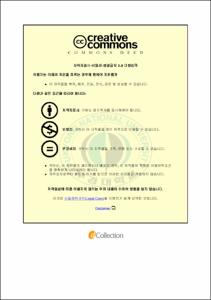섬유강화 복합재료의 형상에 따른 내구성 및 기계적 물성에 관한 연구
- Alternative Title
- Study on the durability and mechanical properties of different type in the fiber reinforced composites
- Abstract
- Fiber Reinforced Plastics (FRP) is one of composites which has been widely used in construction, and other fields as replacement of typical materials, because it has excellent properties such as specific strength, elasticity, durability and so on.
However, the properties of composites depend on the environmental conditions such as temperature, humidity, acidity and ultraviolet radiation. So these environmental conditions make composites be degradable.
Especially, the matrix in composites is plasticized and cracks are introduced by volume expansion of water. Also, swelled moisture decrease bonding strength. Then, mechanical properties of composites become worse by degradation of interface and matrix resin.
In this study, the effect of various environmental conditions on durability of glass fiber and carbon fiber reinforced composites using tensile test specimen of strand type have been investigated. The durability test using strand type specimens was easy and more reliable compared with typical test specimens. The tensile strength of fiber reinforced composites decreased with increasing the rate of water absorption. Also, tensile strength with carbon fiber strand composites was higher than that of glass fiber strand composites under all moisture environment. Also, the durability of carbon fiber reinforced plastic(CFRP) rebar for specific environmental conditions has been investigated.
The results were very similar with the carbon fiber strand composites. However, the weight gain and degradation were found to be highest for distilled water at 80℃ and alkaline solution. The bending strength and shear strength of CFRP rebar and glass fiber composite(GFRP) rebar was studied. As a results, the bending strength of CFRP rebar was higher than that of GFRP rebar. It was also found that the properties of FRP rebar depend largely on fiber volume fraction.
FRPs of carbon fiber and glass fiber reinforced in ABS resin were made by vacuum casting method. This method was expected to improve the properties of ABS resin and faster than typical method. The tensile strengths of carbon fiber and glass fiber reinforced ABS composites increased with increasing the content of fiber fraction. The tensile strength of carbon fiber reinforced ABS composites was higher than glass fiber reinforced ABS composites. Especially, carbon fiber reinforced ABS composites containing the maximum content of carbon fiber, as 5.87 wt.%, was three times stronger than ABS resin.
- Issued Date
- 2011
- Awarded Date
- 2011. 2
- Type
- Dissertation
- Publisher
- 부경대학교
- Affiliation
- 부경대학교 재료공학과
- Department
- 대학원 재료공학과
- Advisor
- 문창권
- Table Of Contents
- 1. 서 론 1
1.1 연구 배경 및 목적 1
1.2 이론적 배경 4
1.2.1 복합재료의 정의 4
1.2.2 섬유강화 복합재료의 기본 개념 및 메커니즘 6
1.2.3 섬유강화 복합재료의 계면에 따른 기계적 특성 8
1.2.4 섬유강화 복합재료의 물성평가 18
2. 섬유강화 복합재료의 다양한 환경에 대한 내구성 시험 24
2.1 서 언 24
2.2 재 료 26
2.3 실험방법 30
2.3.1 스트란드형 시험편 제작 30
2.3.2 내구성 시험 환경 조건 32
2.3.3 무게 변화율 측정 33
2.3.4 스트란드형 시험편의 인장 시험 34
2.3.5 보강근형 시험편의 굽힘 시험 36
2.3.6 현미경 관찰 38
2.4 결과 및 고찰 39
2.4.1 무게 변화율 39
2.4.2 강도 변화 45
2.4.3 현미경 사진 53
2.5 결 언 59
3. FRP 보강근으로 제작된 섬유강화 복합재료의 기계적 특성 61
3.1 서 언 61
3.2 재 료 63
3.3 실험방법 65
3.3.1 FRP 보강근의 제작 65
3.3.2 섬유 체적 함유율 측정 67
3.3.3 굽힘 시험 69
3.3.4 전단 시험 72
3.3.5 파단면 관찰 74
3.4 결과 및 고찰 75
3.4.1 섬유 체적 함유율 75
3.4.2 굽힘 강도 79
3.4.3 전단 강도 84
3.4.4 파단면 사진 88
3.5 결 언 95
4. 장섬유 강화 ABS 수지 복합재료의 제작과 물성시험 96
4.1 서 언 96
4.2 재 료 98
4.3 실험방법 101
4.3.1 진공 주형법 101
4.3.2 독본형 시험편 제작 103
4.3.3 인장 시험 108
4.3.4 파단면 관찰 109
4.4 결과 및 고찰 110
4.4.1 인장 강도 110
4.4.2 파단면 사진 115
4.5 결 언 123
5. 결 론 124
[참고문헌]
- Degree
- Doctor
- Files in This Item:
-
-
Download
 섬유강화 복합재료의 형상에 따른 내구성 및 기계적 물성에 관한 연구.pdf
기타 데이터 / 14.19 MB / Adobe PDF
섬유강화 복합재료의 형상에 따른 내구성 및 기계적 물성에 관한 연구.pdf
기타 데이터 / 14.19 MB / Adobe PDF
-
Items in Repository are protected by copyright, with all rights reserved, unless otherwise indicated.